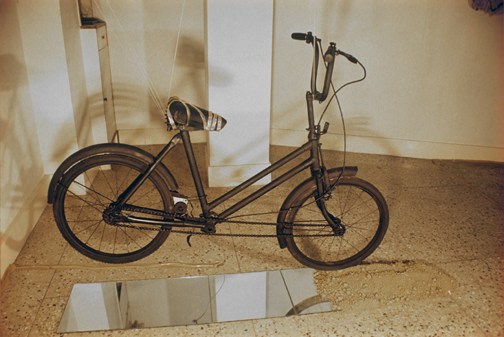
Following as it does in the footsteps of Nalini Malani's installation based on Heiner Mueller's 'Medea' or even Navjot Altaf's recent multimedia show 'Links Destroyed and Rediscovered,' Rummana Hussain's exhibition, 'Fragments and Multiples' which opens at Gallery Chemould tomorrow, highlights the fact that contemporary Indian art is stepping out of its hitherto staid frame.
In fact, Indian artists are actively seeking to collaborate with each other and with others from the related arts, to explore the endless creative possibilities inherent in diverse mediums, including multi-media.
MF Hussain, Vivan Sundaram, Bhupen Khakhar, and Shakuntala Kulkarni are some of the artists who have also explored alternative modes of communication in recent years.
Critics, sections of the media, sponsors, and the lay public have not, however, been very receptive to such efforts. Shows which combine performances, sculpture, multimedia projections, or site specific installations have either drawn totally bewildered responses or have been panned as yet another gimmick.
Says Nalini Malani, "The desire to use alternative mediums has been there for a while now, but one of the major reasons preventing artists from exploring them has been financial constraints. Support, either institutional/governmental or from the private/corporate sector, has just not been forthcoming in the area of the visual arts. For instance, they don't mind sponsoring one-off music or dance performance, but in the case of an art installation, there is a certain resistance... Maybe it has to do with our reverence, so to speak, for the traditional."
Malani also believes that while assessing such developments, one must keep in mind the fact that the art movement in India as a whole is nascent; as a result, it may not be completely valid to examine the alternative mediums in the light of developments in the West. She adds, "As to whether such shows are gimmicks or not, all I can say is that let the critics apply the same acid test they would to a painting or a piece of sculpture."
Promoters of art appear to agree. Chemould Art Gallery's Shireen Gandhy, as someone who has consistently supported such shows (Sheela Gowda, Rini Tandon, Nalini Malani, to cite a few examples), is certain that this phenomenon is not merely a trend and that these shows are not just gimmicks.
"Artists do what they are doing out of a passionate need to state something in a certain matter," she says. "Yes, there have been shows which haven't worked due to inherent flaws, but it wouldn't be fair to cite these as a general yardstick."
Gandhy feels we in India always see things in accepted, standardized images. It will be many years before such forms of communication find both acceptance and sponsors.
Dadiba Pundole, another young promoter willing to support innovation, asserts, "I would definitely not term what is happening as a gimmick or as yet another trend. Artists are always seeking new ways, new mediums, through which to express themselves.
"The reason why such expression has taken so long to emerge here is that we as a culture are just not willing to take risks or accept new ideas," he adds. "The traditional dominates in every sphere of our life, not just in the arts. Why talk of...etc. when even... as an art form are just...accepted?"
Pundole says he the occasion to seek sponsors but given the fact that...
....
For now, though, as an observer of the art scene out, "the excitement is catching on."